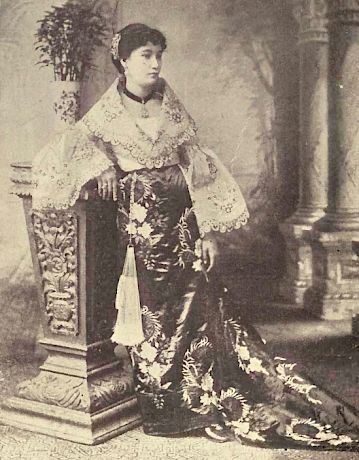How to Research the History of Maritime Asia and the Spanish Pacific during a Pandemic

Historians around the world are confronting an unprecedented lack of access to libraries and archives as a consequence of the global pandemic. It seems increasingly likely that many of these cultural institutions will remain closed to researchers for the rest of this year at least, and while some are taking steps towards reopening in coming weeks, various factors, including travel bans, make long-distance, cross-border journeys to archives impossible for many of us.
The good news is that there is a wealth of published and digital sources that we can engage with to research and write about the past. Thanks to the digital revolution, there are enough materials on the history of the early modern Philippines and the Spanish Pacific to inspire history capstone projects and honors theses in addition to more advanced research projects.
The transregional character of the early modern Philippines makes the archipelago a fascinating place to study. Long-distance trading routes connected the islands to maritime Asia and the Indian Ocean world. After the Spanish established their first permanent settlement in the islands in Manila in 1571, the archipelago also became integrated into the new Spanish Pacific and colonial Latin America. Here is an overview of some of the key places to access digital materials for the study of the Philippine before 1800.
—Kristie Flannery
Blair & Robertson’s “The Philippine Islands”
This fifty-two-volume collection of English translations of primary sources for the history of the Philippine islands under Spanish rule was published in the first years of the twentieth century. You can find the fully digitized set in the University of the Philippines Diliman’s digital library.
The collection is organized chronologically, and volumes 51 and 52 are indexes to the whole set. Digitization means that you can easily do full-text searches for key words. Sources published here include: eyewitness accounts of massacres of Chinese communities in Manila and its hinterland, friar accounts of indigenous religious rituals, and relations of the British invasion and occupation of Manila in 1762.
It is no coincidence that the publication of this volume coincided with the establishment of the U.S. empire in the Philippines. “The Philippine Islands” was a government-supported effort to develop knowledge about the territories and people newly under US control. As Gloria Cano, among others, have pointed out, the collection bears a strong anti-Spanish bias. Cano argues that the documents selected for inclusion highlighted the worst aspects of Spanish colonial rule, while also noting critical translation errors. Approaching the collection with these limitations in mind, “The Philippine Islands” remains an important body of primary sources accessible to non-Spanish speakers.[1]
Rare Books
A rich print culture developed in the Spanish Pacific. Hundreds of books were printed in Manila in the sixteenth, seventeenth, and eighteenth centuries on topics from piracy and war to evangelism, religious celebrations, religious miracles, and natural disasters. My trick for finding digitized copies of books published in the Philippines before the nineteenth century involves consulting W. E. Retana’s “Aparato Bibliográfico de la historia general de Filipinas” (1906). This three volume annotated bibliography on books about the Philippines published between 1524 and 1905 includes a whopping 2600 entries. You can download Retana’s bibliography here from the Biblioteca Digital Hispánica (bne.es). Use it to find titles that you can then hunt down on the same bne.es website and Google Books. The John Carter Brown Library, the Newberry Library, the Lilly Library, and other important repositories of digitized Filipiniana may have the titles that you want.
Maps
Maps are cultural artefacts that historians can use to understand map-makers’ ideas about space and sovereignty, in addition to the social world and cultural milieus they inhabited. Chicago’s Newberry Library holds one of the world’s biggest collections of early modern maps. The Newberry’s digitized maps include Pedro Murillo Velarde’s “Carta hydrographica y chorographica de las Yslas Filipanas” (1734). This map of the Philippine islands is framed by ten vignettes or illustrations of everyday life in the islands that highlight the diversity of the archipelago’s population. These snapshots include wealthy mestizos wearing European-style wigs (very fashionable in the mid-eighteenth century), Africans dancing and making music, and a group of Chinese men representing very different social classes: wealthy money-lenders and poor fishermen. Other important digital map repositories include those at The British Library and The John Carter Brown Library.
Manuscripts
If you can read Spanish, you can explore the digitized manuscript collections housed in the Archive of the Indies in Seville. Materials relating to Philippines history can be accessed via the PARES web portal. University of British Columbia recently hosted a webinar with PARES expert Scott Cave, who offered a crash-course on how to use PARES to find documents relating to the history of the global Spanish empire. Watch his one-hour webinar here.
[1] María Gloria Cano García, "La Construcción Del Pasado Español en Filipinas Según La Historiografía Imperialista Norteamericana. The Philippine Islands 1493-1898, El Proyecto Imperialista Más Ambicioso," in De Tartessos a Manila: Siete Estudios Coloniales y Poscoloniales (PUV, 2008). P209-239